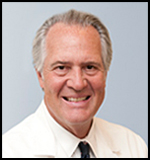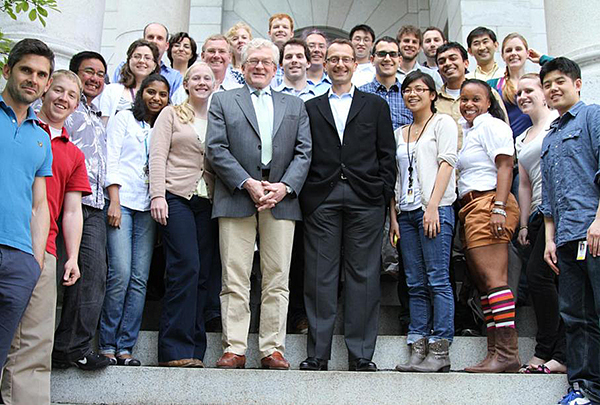Massachusetts General Hospital

Harry E. Rubash, M.D.
Edith M. Ashley Professor of Orthopaedic Surgery
Harvard Medical School
2011-12 Chief's Report
Harris Orthopaedic Laboratory (HOL)
The Harris Orthopaedic Laboratory (HOL) is under the co-direction of Drs. Orhun K. Muratoglu and Henrik Malchau. Members of the HOL have contributed to the field of adult reconstructive surgery for over four decades. An array of different topics have been studied and major contributions have been made in the areas of implant stability, implant fixation, bearing-surface applications, and first, second, and now third generations of highly cross-linked polyethylenes.
Today, our research areas are advancing material development in joint repair and replacement under the direction of Dr. Muratoglu. The pre-clinical material research team develops novel UHMWPEs for improving the longevity of joint implants and expanding the use of joint replacement safely to younger and more active patients. Another cutting-edge area is the development of non-degradable hydrogel-based materials for integrative and mechanically feasible repair of cartilage defects at an early degenerative state. The materials research team collectively brings experience in material and polymer science, polymer chemistry, biomaterials and biomechanics testing and bench-to-clinic implant development as well as follow-up testing of explanted devices to analyze in-vivo effects.
Dr. Charles R. Bragdon, who has been a member of the Laboratory for over three decades, is leading several studies to evaluate the clinical performance of first and second generations of highly cross-linked and melted polyethylene as well as the Vitamin-E doped irradiated polyethylenes for use in hip and knee arthroplasties. It may be hard to believe, but Dr. Bragdon and I did the first uncemented titanium fiber metal canine hip replacement in the early eighties.
The combination of clinical outcomes studies and specialized RSA studies have determined that the wear behavior of cross-linked polyethylene, in conjunction with traditional as well as large femoral heads, has been dramatically decreased with the use of this new material. These studies have shown marked reduction in wear and femoral head penetration out to ten years of clinical use. Dr. Malchau and co-investigators, who are quite pleased with these results report, “so far the first generation highly cross-linked polyethylene performs as predicted by the pre-clinical experiments and seems to be the bearing of choice in the active patient.”
The clinical research team, under the director of Dr. Malchau, develops local and regional implant registries in collaboration with orthopaedic surgeons in arthroplasty, spine, hand, sports medicine, trauma, and orthopaedic oncology. They also conduct prospective clinical studies nationally and internationally on alternative bearing materials and new implant designs. This provides fast and valuable information on the performance of newly developed implants and helps compare them to historical standards. These studies also can provide feedback on surgical techniques and skills to improve clinical outcomes. The HOL has contributed many important advances to the field of orthopaedic surgery, primarily in the area of load bearing materials, the most widely used joint-specific outcomes vehicle, and the Harris Registry, as well as a multiplicity of improvements in implant design, surgical technique, surgical instruments, and surgical approaches.
The remarkable scientists in this Laboratory had another incredible year at the ORS and the AAOS with over 40 abstracts presented. Once again the members of this outstanding Laboratory have added a tremendous amount of new knowledge to our field. I know these important contributions will continue in the future. Here’s to another fabulous year!

- MGH Chief's Report
- Introduction
- Bicentennial
- Innovation
- In Memorium
- New Faculty
- HCORP
- Retreat
- Facilities
- Center for MoM THR
- Courses
- Subspecialties
- Adult Reconstructive
- Hand & Upper Extremity
- Foot & Ankle
- Oncology
- Pediatrics
- Podiatry
- Shoulder
- Sports
- Spine
- Trauma
- Research Labs
- Sarcoma & Mol Bio
- MSK Res & Innovation
- MSK Engineering
- Bioengineering
- Shoulder Biomotion
- Harris
